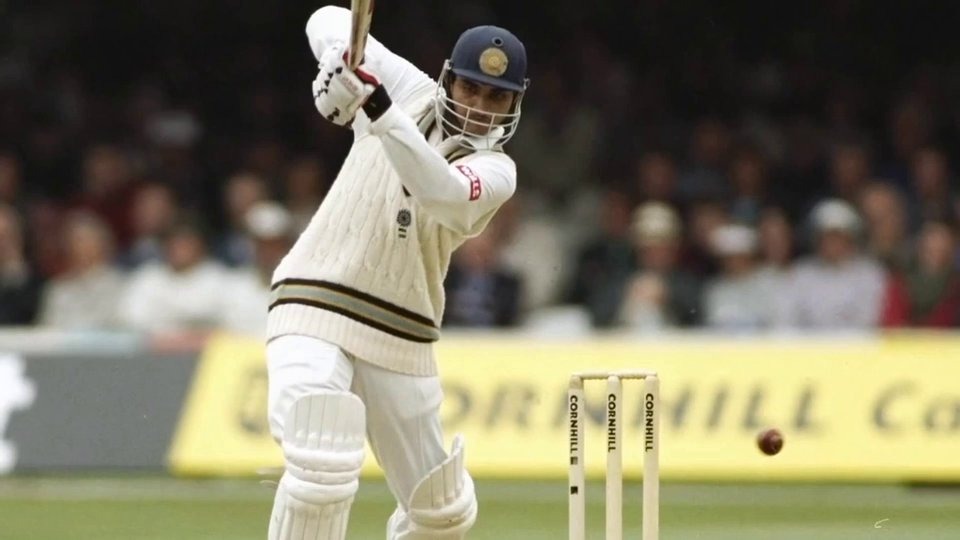
With the Indian economy opening up to foreign participation in various sectors in the early 1990s, it forever changed the life of the middle class in the country. One of the major changes that took India by storm in that era was the advent of Cable TV. Suddenly, one could move fingers around the TV remote and watch a swathe of channels. For a sports fan, one could switch over from live cricket to Wimbledon to WWF (later to be known as WWE), or a talented Michael Schumacher battling it out against the Brit Damon Hill in Formula 1. Although it needed a bit of coaxing to persuade your mother in order to watch a live match instead of completing school assignments.
Around that time, in 1994-95, England A arrived on the shores of India to lock horns with India A in List A and first-class games. Captained by Alan Wells, the Sussex cricketer, England A had a good mix of youth and experience. It was true that the England senior team had endured a chastening experience in 1993, but the relatively younger England A side seemed to be a spirited unit, willing to embrace different climes and culture.
They also won the first ‘Test’, beating India A by five wickets at Eden Gardens. While watching highlights of the opening game on Prime Sports, a certain Indian cricketer’s emotions caught the eye. It was Sourav Chandidas Ganguly, future India captain. Playing at his home ground, Ganguly removed Michael Vaughan, future England skipper, LBW with a delivery that moved a tad. An ecstatic Ganguly, then 22, fist-pumped a few times and ran across towards Vijay Yadav, the wicket-keeper, and rest of his teammates to celebrate. The celebrations were certainly that of a feisty cricketer.
Ganguly perhaps won’t have fond memories of that A series. India A didn’t just lose 0-3, but he was constantly troubled in the corridor of uncertainty by the Derbyshire-Lancashire pace duo of Dominic Cork and Glenn Chapple. During the course of the series, it felt as if some of the young Indian cricketers would end up having some battles with the able England A pace pair in the near-future. Although it remained a mystery as to why Chapple never got a Test cap, Cork did represent England a fair number of times. And some 15-18 months after the completion of the A series, when Ganguly made his Test debut on the hallowed turf of Lord’s, he once again came face-to-face with Cork. This time around, Ganguly had Cork’s measure, scoring a hundred on Test debut.
That Lord’s Test of 1996 turned out to be one of the glittering moments of Ganguly’s career. He brandished his willow in front of a packed house, cracking sumptuous drives and cuts through the off side. Memories of how he began his innings with a free-flowing cover-drive off Peter Martin flash like a bulb. Geoffrey Boycott, known for stressing the importance of technique, described the shot as follows: “Foot right to the pitch of the pitch of the ball, nice straight follow-through and high raised elbow.”
Yes, Cork, who had troubled Ganguly in India in the one-square foot window outside off, did tempt him to play airy-fairy drives. He even shifted the angle to round the wicket, but to no avail. Eventually, Ganguly compiled his ton with an aesthetically pleasing drive off Cork. Not surprisingly, he took his helmet off and celebrated the moment by waving his bat to the Indian dressing room.
Ganguly’s hundred also shut up a few critics back home. Before the commencement of the Test series, there were enough whispers about his selection in the Indian squad. An alleged incident related to the 1991-92 tour of Australia, where Ganguly reportedly refused to serve drinks as a 12th man, was brought up quite a few times by certain sections of the media. But Ganguly gave a fitting riposte to all his detractors with bat in hand.
That Test match also seemed like the dawn of a new Indian team. Another Test debutant, Rahul Dravid, showcased watertight defence and finished with a gutsy innings of 95. As the years went by, a few more new entrants joined the Indian team. Ultimately, in 2000, amid the fallout of the match-fixing scandal, Ganguly took over the reins of the Indian side. It didn’t take long to realise that the same feisty cricketer who celebrated the dismissal of Vaughan with a fist pump was going to change the face of Indian cricket with his aggressive captaincy.



